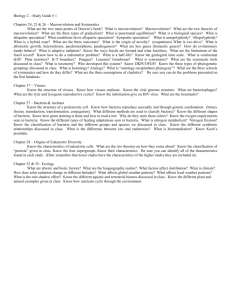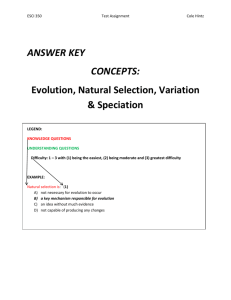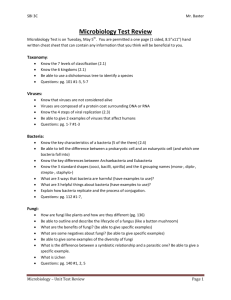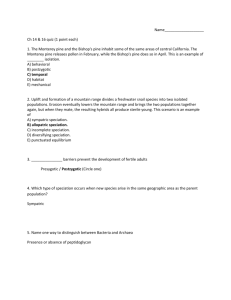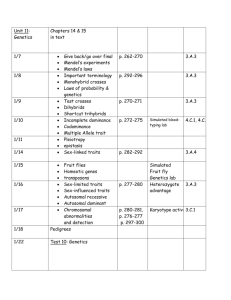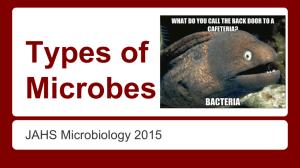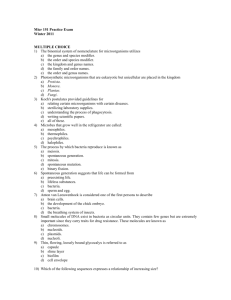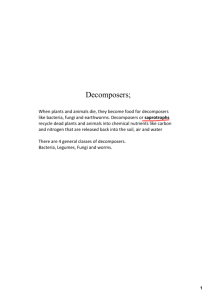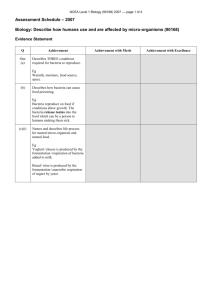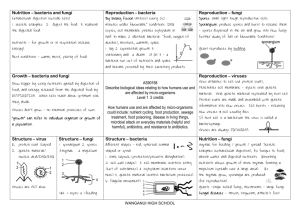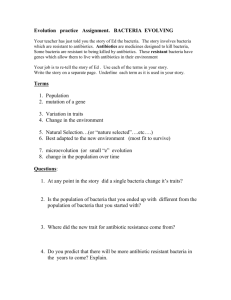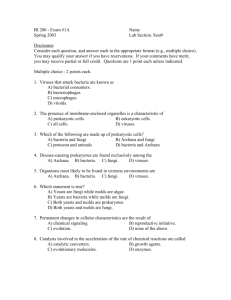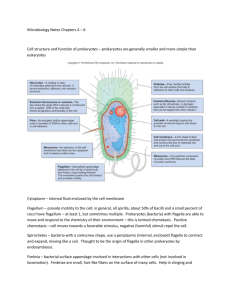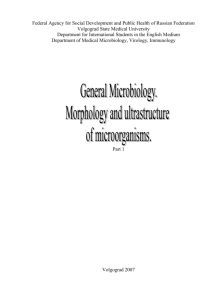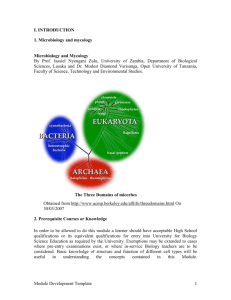Biology 2 – Study Guide # 2
advertisement
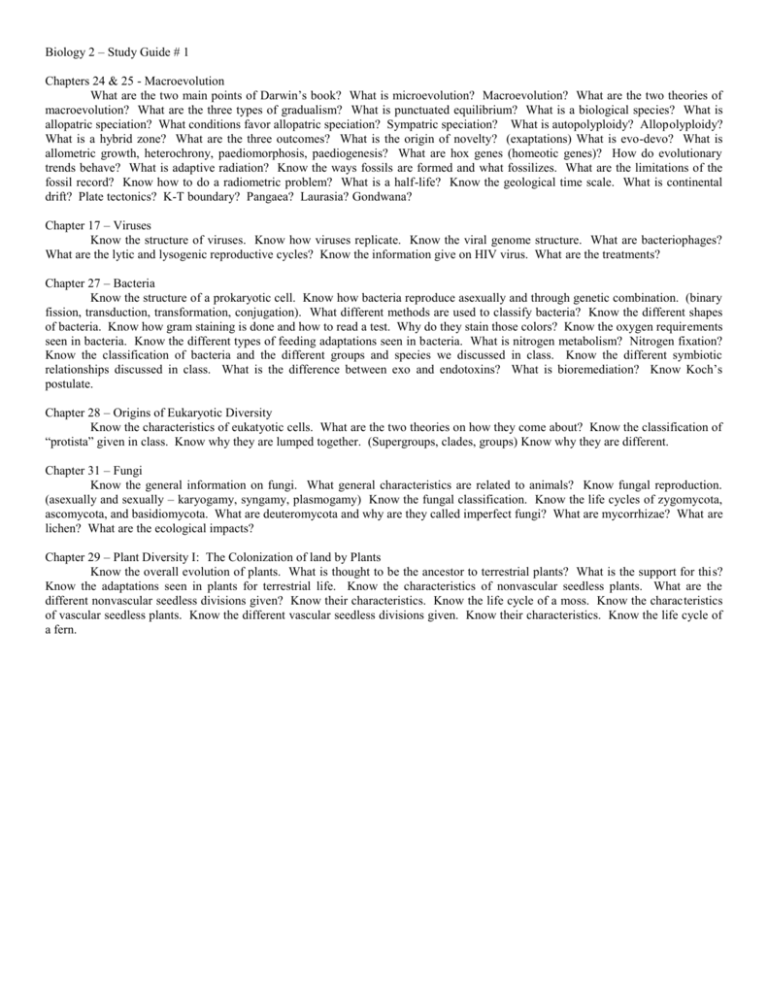
Biology 2 – Study Guide # 1 Chapters 24 & 25 - Macroevolution What are the two main points of Darwin’s book? What is microevolution? Macroevolution? What are the two theories of macroevolution? What are the three types of gradualism? What is punctuated equilibrium? What is a biological species? What is allopatric speciation? What conditions favor allopatric speciation? Sympatric speciation? What is autopolyploidy? Allopolyploidy? What is a hybrid zone? What are the three outcomes? What is the origin of novelty? (exaptations) What is evo-devo? What is allometric growth, heterochrony, paediomorphosis, paediogenesis? What are hox genes (homeotic genes)? How do evolutionary trends behave? What is adaptive radiation? Know the ways fossils are formed and what fossilizes. What are the limitations of the fossil record? Know how to do a radiometric problem? What is a half-life? Know the geological time scale. What is continental drift? Plate tectonics? K-T boundary? Pangaea? Laurasia? Gondwana? Chapter 17 – Viruses Know the structure of viruses. Know how viruses replicate. Know the viral genome structure. What are bacteriophages? What are the lytic and lysogenic reproductive cycles? Know the information give on HIV virus. What are the treatments? Chapter 27 – Bacteria Know the structure of a prokaryotic cell. Know how bacteria reproduce asexually and through genetic combination. (binary fission, transduction, transformation, conjugation). What different methods are used to classify bacteria? Know the different shapes of bacteria. Know how gram staining is done and how to read a test. Why do they stain those colors? Know the oxygen requirements seen in bacteria. Know the different types of feeding adaptations seen in bacteria. What is nitrogen metabolism? Nitrogen fixation? Know the classification of bacteria and the different groups and species we discussed in class. Know the different symbiotic relationships discussed in class. What is the difference between exo and endotoxins? What is bioremediation? Know Koch’s postulate. Chapter 28 – Origins of Eukaryotic Diversity Know the characteristics of eukatyotic cells. What are the two theories on how they come about? Know the classification of “protista” given in class. Know why they are lumped together. (Supergroups, clades, groups) Know why they are different. Chapter 31 – Fungi Know the general information on fungi. What general characteristics are related to animals? Know fungal reproduction. (asexually and sexually – karyogamy, syngamy, plasmogamy) Know the fungal classification. Know the life cycles of zygomycota, ascomycota, and basidiomycota. What are deuteromycota and why are they called imperfect fungi? What are mycorrhizae? What are lichen? What are the ecological impacts? Chapter 29 – Plant Diversity I: The Colonization of land by Plants Know the overall evolution of plants. What is thought to be the ancestor to terrestrial plants? What is the support for this? Know the adaptations seen in plants for terrestrial life. Know the characteristics of nonvascular seedless plants. What are the different nonvascular seedless divisions given? Know their characteristics. Know the life cycle of a moss. Know the characteristics of vascular seedless plants. Know the different vascular seedless divisions given. Know their characteristics. Know the life cycle of a fern.
